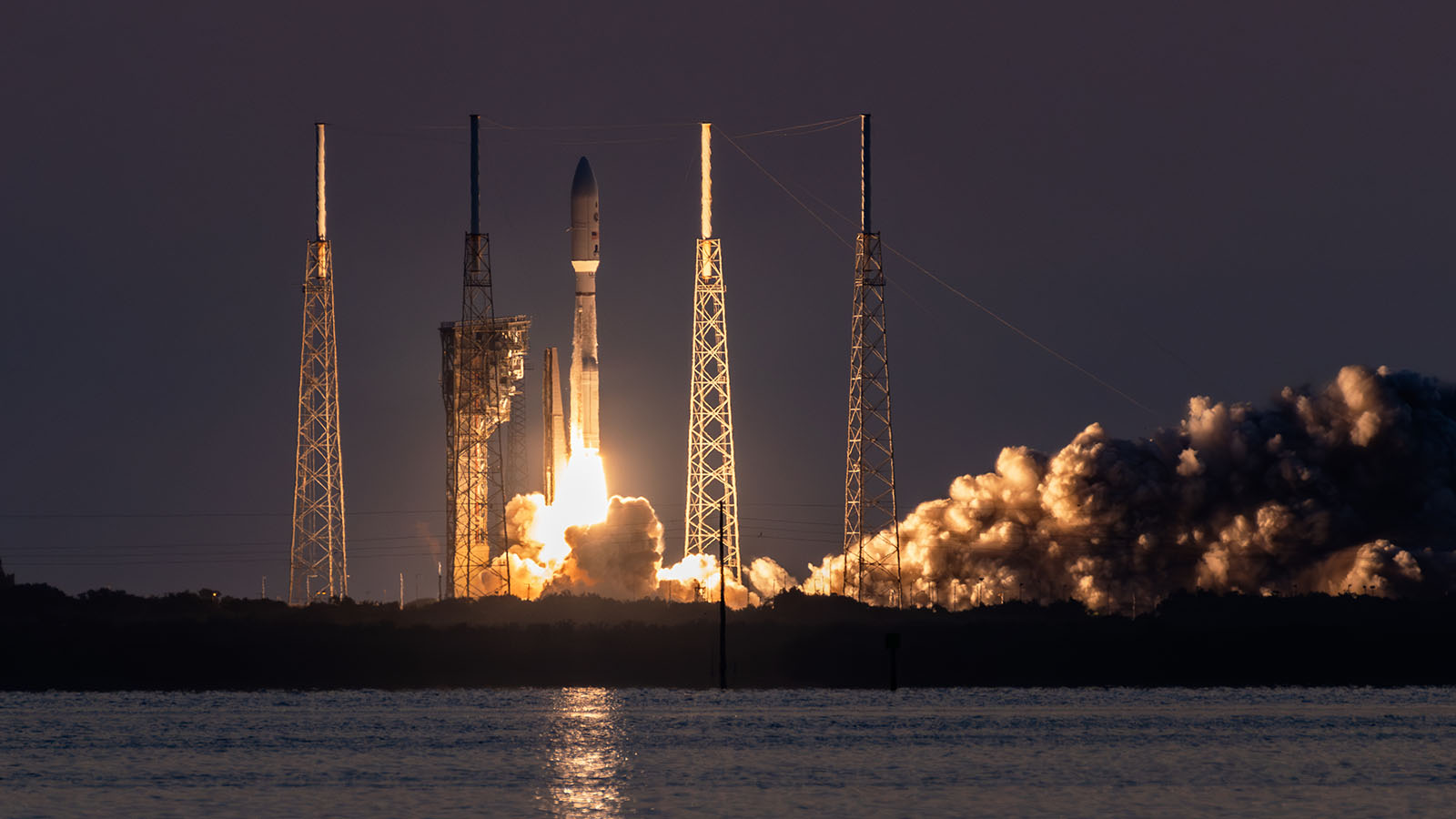Stay Up to Date
Submit your email address to receive the latest industry and Aerospace America news.
The Solid Rockets Technical Committee studies techniques applied to the design, testing and modeling of rocket motors based on solid propellant grains.
The year’s achievements showcased the essential role of solid rocket motors, SRMs, in civil spaceflight, tactical and strategic missile programs, and their growing importance in space exploration.
In January, Northrop Grumman completed a static fire test of a motor like the one that will propel each second stage of the Sentinel intercontinental ballistic missiles. The test, performed in a vacuum chamber at the U.S. Air Force’s Arnold Engineering Development Complex in Tennessee, was followed by shroud fly-off and missile modal tests at the company’s Utah plant in February. The ground-launched Sentinels are to replace the Minuteman IIIs and operate through 2075.
In tactical missile developments, Lockheed Martin achieved several milestones. In March, the company conducted flight tests of two Extended Range Guided Multiple Launch Rocket Systems, with a follow-up test in September at White Sands Missile Range in New Mexico, moving the design closer to operational deployment by the Army. In April, Lockheed Martin received a $483 million contract to produce additional Joint Air-to-Ground Missiles and Hellfire II missiles.
In the missile defense sector, two U.S. Navy destroyers in April and October fired a dozen solid-fueled Standard Missile-3 interceptors out of the Mediterranean Sea to intercept Iranian ballistic missiles, the first combat use of the interceptors. In a March test, an upgraded SM-6 missile launched from an Aegis ship intercepted a Northrop Grumman two-stage solid-fueled Medium Range Ballistic Missile target in a ballistic missile detection, tracking and interception exercise.
In May, Lockheed Martin launched a PAC-3 Missile Segment Enhancement interceptor, impacting a cruise missile for the first time. The test at White Sands expanded the use of the PAC-3 missile system to Aegis ships.
In the realm of launch vehicles, United Launch Alliance in January launched its inaugural Vulcan Centaur rocket, the planned successor of its Atlas Vs. Vulcan lofted the Peregrine lunar lander to orbit, supplemented by two GEM-63XL strap-on solid boosters, the longest monolithic SRBs ever manufactured. In October, ULA launched the second Vulcan, setting the design up to launch payloads for the U.S. Space Force, pending a review from the service. In June, an Atlas V launched two NASA astronauts in a Boeing Starliner capsule toward the International Space Station, the first time an Atlas V carried humans. In July, an Atlas V sent a Space Force satellite to orbit, ULA’s final national security launch with the design.
Europe also saw the debut of a new rocket. In July, the first Ariane 6 sent several satellites to orbit. This marked a new chapter for European space exploration, as multiple Ariane 6 configurations are available for different mission requirements. September marked the end of another chapter: The last Vega rocket was launched, lofting the Sentinel-2C satellite.
Throughout the year, growth in the SRM industry was driven by established companies and new players. In January, Aerojet Rocketdyne (now part of L3 Harris) partnered with the Naval Surface Warfare Center Indian Head Division to increase SRM production. Raytheon announced partnerships with Avio of Italy and Nammo of Norway to expand U.S. military SRM manufacturing. In August, California-based Anduril announced a $75 million funding allocation toward a new state-of-the-art SRM production facility. Denver-based Ursa Major in September received a Pentagon contract for 3D printing SRM components. In June, X-Bow of New Mexico received contracts to develop Mk72 and Mk104 boosters for the Navy’s Standard Missiles. In August, the company completed a preliminary design review for the Large Solid Rocket Motor being developed for the Department of Defense.
The future of solid propulsion systems looks more promising than ever, paving the way for keystone advancements and expanded production capability on the near horizon.
Contributors: Russ Ellis, Timothy Kibbey, Agostino Neri and Wesley Ryan
Stay Up to Date
Submit your email address to receive the latest industry and Aerospace America news.




